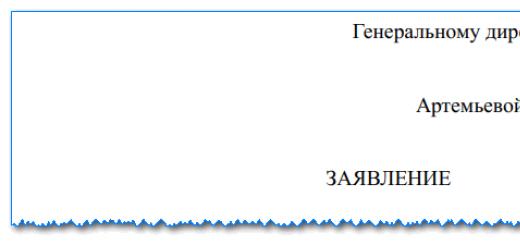Choosing banks and evaluating conditions
Refinancing loans is sometimes not only convenient, but simply necessary, because no one is immune from unforeseen circumstances. The level of income we expect may fall, or expenses rise, and a payment that was quite affordable for us may become a burden. You can, of course, try to restructure your loan, but the rate will not decrease, but this can often be achieved by refinancing. This is especially true for those who could not get a loan at a low interest rate, but for a certain period of time created a positive credit history and now have every chance of a more loyal attitude towards themselves.
Banks refinance existing customers quite willingly, as they already have a certain credit history, and in this case, more accurate forecasts can be made. Therefore, the lack of no, only clients with poor credit history. Let's make a short review of such programs to see which bank you can refinance at a lower interest rate and under the best conditions.
Sberbank
As part of consumer lending, Sberbank can refinance up to five loans from third-party banks for a period of 3 months to 5 years. The amount of such a loan can be from 30,000 rubles to 3,000,000 rubles, and no collateral is required. To do this, you need to provide the bank with a passport, a certificate or an extract with the data of the previous loan and the details of the "old" bank. If the requested amount is the same as the balance of the debt, then documents confirming the financial condition and labor activity are not needed. In this way, you can reissue a consumer loan, car loan, credit card debt or overdraft.
Like most credit institutions, Sberbank has certain requirements both for clients (age from 21 to 65 years old, at least 6 months of experience at the last place of work and at least 1 year of total experience over the past five years), and for the refinanced loan (total term of the agreement - at least 6 months, maturity - at least 3 months, timely repayment within the last 12 months). The rate will be fixed from 12.5 (for payroll clients of the bank) to 13.5% per annum. The term for consideration of the application is up to 2 working days.
Similar requirements for work experience and age apply in the case of mortgage refinancing. The minimum amount for obtaining a loan is 500,000 rubles, and the maximum should not exceed the smaller of the values: the balance of the principal debt or 80% of the appraised value of housing. The term of such a loan can be up to 30 years, and the rate will be from 9.5% per annum. Of the insurance, only the insurance of the collateral object is mandatory, the rest is at the request of the clients.
The package of documents for registration includes an identity document, documents confirming income and employment, papers for collateral and documents for a refinanced loan. Consideration of the application takes up to 10 business days.
Natalya Alymova Sberbank
Natalya Alymova, Director of the Retail Lending Department of Sberbank of Russia, told Zanim.ru about the details of the Sberbank refinancing program and its benefits.
VTB 24
Today VTB24 offers 2 refinancing programs. Mortgage loan in the amount of 460,000 to 60,000,000 rubles for up to 30 years, the rate is from 9.45% per annum. And a consumer loan at a rate of 13.5% per annum, in this case the amount will be limited to 3,000,000 rubles, and the term - 5 years. An application can be made without visiting the office - via the Internet on the bank's website.
The advantage of mortgage refinancing at VTB24 is that it is available to both citizens of the Russian Federation and foreigners, and a loan is issued not only in rubles, but also in US dollars and euros. But the minimum amount again loses to the conditions of Sberbank - in VTB24 it is much higher. The package of documents provides for confirmation of income not only with a 2-NDFL certificate, but also in the form of a bank, it is also possible to record income from several places of work.
Rosselkhozbank
More differences in terms of lending compared to previous proposals will be in the Russian Agricultural Bank, where you can refinance consumer loans. One of the undoubted advantages here is a differentiated method of repayment, which is extremely rare lately. The minimum age of the borrower is 23 years. When calculating the loan amount, it is possible to attract co-borrowers in order to increase it.
The loan amount is the same as in Sberbank - up to 3,000,000 rubles, but collateral is required. The package of documents will also not differ much, but the rate may end up being higher. Its minimum value is 11.5% in the presence of collateral, and in the absence of it - from 15%. For participants in salary projects of the Russian Agricultural Bank, the rate will be the lowest. 6% will be added in cases where the borrower and / or his co-borrowers refuse personal insurance and + 3% if documents on intended use funds received.
The application is considered in Rosslkhozbank up to three working days.
In Otkritie Bank, you can refinance, both within the framework of consumer lending and by mortgage. Only citizens of the Russian Federation over the age of 21 and with at least 3 months of experience at the last place of work can count on a positive decision here. It turns out that the age requirements here are less stringent than in other banks, and the amount is slightly less - from 50,000 rubles to 2,500,000 rubles. But for a loan up to 300,000 rubles, only a passport and a second document (for example, a certificate of pension insurance) are enough, but for a larger amount, proof of income and employment will be required, and in addition, you will need to provide a certificate of ownership of any real estate or car . The rate is set individually - from 11.9% to 22.5% per annum.
Summarizing the results, we can say that Sberbank offers the most favorable conditions, while not only the rates are better, but the registration procedure itself is less laborious. A consumer loan can be issued without leaving home, and a mortgage can be obtained with a minimum package of documents. But the proposals of Rosselkhozbank and Otkritie Bank also have their own advantages, which can tip the scales in their favor.
We must not forget about some of the nuances when applying to banks with refinancing loans. In order for the assessment of conditions under different programs to be objective, it is necessary to compare loans with equivalent parameters (for example, in terms of amounts and terms) and be sure to take into account all additional costs. At the same time, for comparison, it is better to take the period that remains before the end of the repayment of the refinanced loan in order to realistically assess how much your payment will change.
Living on credit is becoming a common practice for many Russians. An apartment, a car, furniture or household appliances - all this is purchased on credit, often on favorable conditions with a large overpayment. Many people initially calculate their financial capabilities incorrectly, moreover, it is now difficult to find a person who could boast of stable high incomes. As a result, even if at the very beginning the monthly payments on the loan taken fit perfectly into the expenditure items family budget, then over time they can become an unbearable burden.
Today, a service has appeared on the financial market, which is becoming more and more in demand every day - on-lending, or, in other words, refinancing a loan. The meaning of this operation is to obtain a new loan on more favorable terms in another bank to repay the previous one. Refinancing aims to reduce the monthly payments on the loan by reducing the interest rate, as well as adjusting the loan term and currency.
Refinancing is relevant mainly for large loans issued for a long period, such as mortgages, especially for those that were taken before 2005. With the development of the banking services market, interest rates for lending to real estate have dropped so much that it is much more profitable for borrowers to refinance than to continue paying loans recklessly taken at draconian interest rates.
When choosing a bank that can refinance an old loan, it is necessary to carefully study the conditions that it can offer, at least in order not to step on the same rake a second time. After all, the most frequent “defectors” from one bank to another are the so-called victims of bank advertising of low interest rates, who failed to notice in time all the hidden fees, insurances and commissions that the bank manager did not consider it necessary to draw their attention to.
In order to ensure that the apparent benefits of on-lending do not turn into worsening conditions and do not entail new costs, you should first consult with a competent specialist who will help you make the right decision and choose a bank with the most suitable conditions for refinancing. Some banks in their on-lending programs have the following nuance, which you should definitely pay attention to: lower interest rates can only be valid for a certain period, after which the bank can apply the current conditions to the borrower. As a result, you can again fall into an even more difficult bondage.
The loan transfer procedure is carried out in two stages. First, an application is written to the future creditor bank, which sets out a request to issue the necessary amount to pay off the debt in the former bank. Further, the procedure for obtaining a loan is repeated, the pledge is re-registered by a notary, all the necessary payments are made again: property insurance, appraiser, notary services. Moreover, this payment comes entirely from the pocket of the borrower. You should also pay attention to the presence of sanctions for the early closure of the loan agreement in the old bank, because the refinancing procedure is essentially an early repayment. If such sanctions exist, it is unlikely that refinancing will bring tangible benefits to the borrower.
Refinancing by the client may be the goal of obtaining an additional loan on top of the amount needed to pay off the debt, as well as bringing several debts into one. But basically, they go for on-lending in order to reduce the monthly payment.
Experts recommend refinancing if the difference between interest rates on loans is at least 3%, respectively, the most profitable and justified is refinancing on a mortgage. Basically, mass transfers of customers from small banks to large ones are carried out, since the conditions for on-lending among the leading financial institutions are almost the same, so this procedure will not make any sense.
If you have done all the necessary calculations and are convinced that it is refinancing that will be the most optimal way out of this situation for you, be prepared for the fact that this procedure takes more than one day, and you should be patient in order to achieve your goals.
You can combine several loans into one using the refinancing service. It allows you to get more favorable credit terms or help borrowers who find themselves in a difficult financial situation. In the latter case, refinancing will involve issuing a loan for a longer period in order to reduce the monthly payment. Those who have one of the loans in foreign currency can also resort to refinancing, which, due to the devaluation of the ruble, makes payments on such a loan unprofitable.
Also, the association allows you to make the repayment of the loan more convenient. So, if the borrower has several loans, then they need to be paid at different times and in different banks, which is not very comfortable.
This service may become especially relevant for those who took consumer loans at an ultra-high interest rate - 30-70% per annum. At the same time, you can refinance the loan at a rate of 14-17%, which will significantly reduce the overpayment.
How to combine multiple loans into one
To combine several loans into one, you can use special programs refinancing. To do this, you need to contact the bank offering such loans with an application form. You will also need to provide documents confirming income and loan agreements with other banks (including a payment schedule, a certificate of the balance of the debt).
If the loan is approved, new bank- the lender will transfer the required amount to the account of the old bank and provide a new loan agreement. You will first need to write an application for the full early repayment of old loans.
Most banks have refinancing programs for large loans, such as mortgages or car loans. Thus, they seek to lure conscientious customers to themselves. But there are banks that allow you to refinance several small consumer loans. For example, there are such offers in VTB24, Sberbank and Petrocommerce. The total amount of refinanced loans should not exceed 1 million rubles. In the Bank of Moscow, the maximum amount is 3 million rubles.
The second option assumes that you yourself calculate the balance of the principal debt for all loans. Then take a regular consumer loan for this amount from the bank and pay off old loans ahead of schedule. It remains to make payments according to the new schedule. The disadvantage of this option is that the bank will take into account credit obligations for old loans when approving maximum amount loan. And the borrower's income may well be insufficient to issue him another loan.
Due to the deteriorating economic situation in the country, there has recently been a trend in the banking market towards demand for refinancing loans. According to statistics, every tenth borrower today turns to the possibility of obtaining a new loan in order to repay an existing one. This is a fairly large figure, which indicates the relevance of on-lending consumer loans.
Refinancing (refinancing) is a special program that allows you to get a new loan in order to pay off the old one. In what cases do people turn to such a program and how profitable is it?
Financial experts point out several reasons why clients decide to refinance. Sometimes this is the impulsiveness of signing the contract, without the desire to delve into the subtleties, numbers and hidden commissions. As a result, after a short time, the borrower realizes the severity of the loan burden and his inability to pay.
On the other hand, over a long term loan, various events may occur in the life of the borrower (dismissal from work, financial problems in the family), which jeopardize the possibility of a stable monthly payment.
Features of on-lending
In many families whose income levels have fallen due to the crisis, there is an urgent need for refinancing. After all, a monthly delay threatens with severe penalties, and you don’t want to get into the black list of borrowers.

It goes without saying that refinancing does not release the borrower from financial liability. Signing a new loan agreement does not release you from paying the old debt. Simply, according to the terms of the new program, the client has the opportunity to extend the term.
There can be several reasons for refinancing:
- loss of stable monthly income;
- various life circumstances;
- inattentive reading of the terms of the contract and, as a result, the financial insolvency of the payment of the monthly payment.
As a rule, banks increase the loan term, which reduces the financial burden on the monthly payment. Of particular interest in refinancing are credit programs with a maturity of more than three years. This makes it possible to significantly facilitate the debt repayment scheme.
Cars, mortgages, loans for household appliances, etc. are subject to the on-lending procedure today. In the case of a mortgage, when the loan term is several decades, a decrease in the interest rate even by 0.5% -1% will significantly affect the final amount.

Of course, when it comes to refinancing, we mean large purchases (house, car, etc.). Many banks have a lending limit of at least 50 thousand rubles. Therefore, if the client has an amount of 10-15 thousand rubles left, most likely the bank will simply refuse the procedure.
Refinancing helps the client to close the principal debt on the loan. At the same time, such a program can be offered both by the Lender itself (the bank in which the current loan is issued), and by any other financial institution.
Analysts, looking at the client's constant delays on the loan, can call the borrower to the bank and clarify the reason for the late payment. In the case of financial problems that do not allow the client at the moment to pay the monthly amount prescribed in the agreement, the bank itself can initiate the process of on-lending.
Why is it beneficial for the bank?
There are 2 reasons for that:
- The client, signing a new contract, in any case, will pay the debt, just the term will be extended.
- Extended term means more profit.
For the client personally, on-lending, from an economic point of view, is not always beneficial. An extended term “pulls” more money out of the borrower than under the first contract. But, on the other hand, sometimes this is the only way not to fall into a debt hole, which the level of income does not allow to get out of.
How does the refinancing process work?
There are two options for on-lending, which allow you to conclude a new agreement in order to repay the current debt:
- internal refinancing;
- external refinancing.
In the case of internal refinancing, everything is simple: the client applies to his bank with a request to change the terms of the agreement and extend the term. The bank reviews applications, conditions of the agreement and makes a decision on issuing a loan.

The situation with the refinancing of consumer loans in Russian banks very different. Some banks provide on-lending loans to their own customers. Other financial institutions offer to refinance loans issued by other banks.
When can a bank refuse a borrower's request? In the event that the current interest rate on the loan is higher than that which the bank will be obliged to offer under the terms of the new agreement.
After all, it may well be that during the term of the agreement, the bank revised its marketing policy and lowered interest rates in order to attract new borrowers. The bank cannot offer an individual rate higher than the one that exists for new customers, but, of course, it will not intentionally lose its profit.
In this situation, you can turn to external refinancing, that is, go to another bank.
In this case, Bank No. 1 (which the client applies to) pays the entire debt to Bank No. 2 (where the client has a current loan). Thus, the client has the opportunity, on more benign terms, to start a repayment program for Bank No. 1 (which has refinanced).
It should be understood that the new bank also goes to the on-lending procedure not out of good intentions. At the expense of conscientious clients who are looking for ways out of a difficult situation, banks increase their base and replenish their loan portfolio. Borrowers with bad credit are not eligible. What is the point of replenishing your base with unscrupulous payers?

Therefore, considering your application in a new bank, specialists will carefully check the delays on loans. It will be possible to take a new loan to cover the existing debt only if there are no delinquencies.
The execution of a new agreement provides for the provision of a full package of documents, as in the case of standard loans. The procedure for internal on-lending is much faster. The client can only re-request a certificate from the place of work to check the level of income.
To sign a new contract, you will need the following documents:
- the passport;
- a copy of the work book;
- income statement ((2NDFL);
- loan agreement (current) and others.
What can you count on?
After consideration of the application and approval of a new loan, the client can count on the following conditions:

When should you apply for a loan refinancing?
There can be several reasons indicating that a client needs consumer refinancing:
- Change in household income.
- Changes in the financial situation in the market.
- Decrease in bank interest rates.
- Consolidation of loans.
- Foreign exchange credit and the growth of the exchange rate.
- Release of bail.
Many banks issue consumer loans secured by collateral, which automatically seizes property. In the case of a loan for a car or a house, the client cannot dispose of the property: donate, sell, exchange, etc.
When applying for an on-lending, the collateral property is automatically released from arrest, since the new agreement pays all the current debt on it to the bank.
Sometimes for a client, releasing a car from bail and the possibility of selling it in order to pay for a second loan is the only reasonable solution.
Minimize debt to the bank
Before signing a new contract, you need to carefully study the following aspects:

- Annual rate. If it is significantly higher than the current one (3-4% or more), then it hardly makes sense to conclude a new contract.
- Overpayment for the entire period. An increase in the loan term will entail the payment of large interest, so ask the specialist to immediately tell you the amount of the overpayment under the new agreement. Compare it with the balance of the current debt and make the right decision for yourself.
- Additional commissions. When attracting new clients and stating a low annual rate, the bank often "is silent" about the additional fees that the client will have to pay monthly. Therefore, before signing the contract, specify the final amount of the monthly payment and all additional fees (including for delay).
- Conditions for early repayment. Of course, the bank does not have the right to refuse early repayment of the loan, but the conditions for partial or full repayment can be very tough and difficult to implement.
How does the contract close?
After the bank has considered and approved the application for a new loan in order to repay the old one, the agreement is closed.

With internal refinancing, the money is credited to an existing client account, thereby closing the amount of debt. The period for crediting funds is from 1 to 3 working banking days.
Of great importance is the loan repayment scheme: differentiated and annuity. With an annuity scheme, the amount of the monthly payment is the same, and with a differentiated scheme, interest is charged on the balance of the debt.
With an annuity type of loan, you actually pay one interest on the loan in the first half of the term. And after the bank has withdrawn its profit, you pay off the body of the loan.
By contacting the organization 6-12 months before the end of the loan term, you actually take a new loan and pay interest again. In this case, on-lending will be beneficial if at least 3-4 years are left before the date of repayment of all debt.
Also, the disadvantage of refinancing is that, regardless of the decision of the bank to provide you with a new loan, you will have to collect a lot of certificates, waste time and pay for the services of a notary, an appraiser of collateral. In some cases, this will be a waste of money.
Pros:
- Opportunity to get out of the financial crisis.
- Reducing the interest rate at another bank.
- Extending the loan term and reducing the financial burden.
- Consolidation of credit products.
- Possibility of removing the arrest of the car or house.
- Changing the structure of the repayment schedule (transition from an annuity to a differentiated scheme).
Minuses:
- The complexity of the procedure.
- Waste of time and the need to collect a large package of documents again.
- Additional expenses (notary, legal advice, etc.).
Conclusion
Of course, if the financial crisis has "driven into a corner", severely changed the conditions and amount of income, refinancing a consumer loan will help to avoid delays and litigation with the court.
According to financial experts, only a program in which the interest rate will be at least 2% lower than the current one will help get out of the financial crisis.
In other cases, a new loan agreement may seem like a lifeline only at first glance. In fact, it will drag you even deeper into the debt hole.
Video. Who benefits from refinancing?
A loan can be made less onerous by lowering the interest rate and the monthly payment. This opportunity arose because the Central Bank reduces the key rate - the one at which it lends commercial banks. The lower the rate for the bank, the lower the rate for you. Therefore, mortgages and consumer loans are getting cheaper. In December 2014, the key rate reached 17% On the key rate of the Bank of Russia and other measures of the Bank of Russia, and on February 9, 2018 fell to 7.5% The Bank of Russia decided to cut the key rate by 25 bp to 7.50% per annum.
If you took out a loan just at the moment when the rates were maximum, then now you can refinance it.
What is loan refinancing
Refinancing is getting a new loan to pay off an existing one. At the same time, a new loan is issued on more favorable terms (the rate is reduced). Due to this, you can:
- Reduce the monthly payment (while maintaining the loan term).
- Reduce the loan term (while maintaining the loan burden).
- Get additional funds to the existing loan (the monthly payment will not increase).
Do not confuse refinancing and restructuring - revising the terms of an existing loan. Refinancing is needed in order to save money, restructuring - to reduce the credit burden if you cannot repay the debt. In the first case, you can apply to any bank, in the second - only to the one where you took the loan.
You can refinance multiple loans at once. For example, you have a car loan and credit card debt. They are combined into one, make a common payment and one bet. Now you pay only once for one loan instead of several payments to different banks. Some banks refinance up to three loans, some up to five. Everything depends on the conditions.
You can refinance a loan in the same bank where you took it, but there is a chance that you will be refused. The bank does not need to reduce the interest on the loan and lose profits. In this case, refinance the loan in another bank. Choose the one that offers you the best conditions.
It works like this. You submit an application for refinancing. It is approved, and the new bank transfers the amount of your debt to the old bank where you originally took the loan. You write an application for early repayment in the previous bank, receive a certificate of closing the loan and transfer it to the new bank. After that, pay the loan as usual, only to another credit institution.
What loans are refinanced
You can refinance any loan: consumer, car loan, mortgage, credit card, debit card with an overdraft. But not all banks offer such a choice, some only work with consumer and auto loans.
There are limits on the amount, but each bank has its own conditions. Not all banks refinance foreign currency loans.
Banks only refinance loans for which the applicant regularly pays. The service may be denied if you have been late with payments for the last 6-12 months.
The bank does not want to deal with unreliable customers who will delay payments or not pay at all. Therefore, you must have a good one.
Another requirement: the loan must not be new (you took it at least six months ago) and must not expire in the next 3-6 months.
When do you need to refinance a loan?
1. If you have multiple loans
The refinancing procedure will make one loan out of several loans with a single payment and a single interest rate.
2. If you took out a mortgage at a high interest rate
Previously, the average mortgage rate was 12-15% per annum, in October 2017 it dropped to 9.95%. In this case, refinancing is beneficial, because it is still a long time to pay and a rate cut of even 1.5% will allow you.
3. If you have a foreign currency mortgage or a foreign currency loan
Due to the growth of the dollar and the euro, foreign currency loans have become burdensome instead of profitable. With the help of refinancing, you can lower the interest rate, reduce the amount of the monthly payment, or make the loan ruble.
4. If you need available funds for an existing loan
When refinancing a loan, you can additionally ask the bank for a certain amount. As a rule, it is 50-100 thousand rubles. It is assumed that the monthly payment will not increase due to the rate cut, although the loan term may increase.
5. If you want to reduce the monthly payment, but are ready to pay off the loan longer
This is not the best measure: with an increase in the loan term, you will pay the bank more interest, which means you will overpay. But if you understand that it is difficult for you to pay, you can refinance it: the interest rate will be lower, the monthly payment will decrease, and the repayment period will increase.
What to pay attention to
If you have paid off most of the loan, then you should not refinance it. Even if your interest rate on the loan decreases, most likely you will not win.
This is because the interest on the loan is paid first, and only then the principal amount. If you refinance a loan, you will pay interest again instead of repaying the principal.
If you took a loan for five years and you have 1.5–2 years left to pay, you should not refinance it.
When refinancing a mortgage in a new bank, additional costs appear: for real estate appraisal, for certificates from the BTI and the house book, for paying for notary services.
Additional expenses will also arise for reinsurance. If you refinance your mortgage or at another bank, you will need to take out a new insurance policy or renew the old one (if your insurance company is accredited by the new bank). The amount of insurance can increase by several thousand a month, which means that the benefit from refinancing will decrease or disappear altogether.
Before using refinancing, calculate loan payments at a new percentage, taking into account additional costs.
If you refinance a loan in the same bank that issued it, there will be less. Therefore, if your bank refuses to refinance you, get approval from another credit institution. With this decision, go to your bank again and ask to refinance the loan again. This will show the seriousness of your intentions, and the service may be approved. Otherwise, the bank will lose a client, and this is unprofitable for him.
Also keep in mind that when refinancing, the loan term may increase. The bigger it is, the worse it is for you. In seven years, you will pay more interest than in five, even if the rate on the first loan is lower.
If you refinance a loan, it is better to keep monthly payments at the same level: this way you will shorten the loan term and pay less interest to the bank, and also get rid of the loan faster.
Before applying for refinancing, check the details: is there a commission for refinancing, for transferring funds from a new bank to an old bank, a penalty for early repayment of a loan in an old bank.
For example, if you refinance to close five loans in different banks, then you may be charged five times a commission for transferring money or fined five times for early repayment.
You will receive exact figures only at the bank branch by submitting an application for refinancing. Approximate data can be obtained using online calculators.
Let's say you took 500,000 rubles for three years at 24% per annum, the calculation scheme is annuity (the same amount of payments every month). In three years, you would give the bank 706,191 rubles.

After a year of payments, you decided to refinance this loan (12 payments have already been transferred, for the year you gave the bank 235,392 rubles, the balance of the debt is 371,024 rubles). For this amount, you need to calculate the refinancing.

Bank X offers you refinancing at 19% per annum for two years. Enter this information into the calculator. Monthly payment will decrease from 19,616 rubles to 18,651 rubles. In two years, you will pay 447,629 rubles on a new loan.

Before that, you have already paid 235,392 rubles to the former bank. It turns out that in total you will give 683,021 rubles. If they had paid on the old loan, they would have given 706,191 rubles. The total benefit will be 21,170 rubles.
This is a benefit without taking into account possible commissions and additional costs. You need to check with your bank about them.
What documents will be needed
To refinance a loan in a new bank, you need to collect a standard package of documents:
- The passport.
- The second identity document (TIN, SNILS, passport, driver's license, debit or credit card any bank, OMS policy).
- Certificate of income 2-NDFL.
- Credit agreement.
- Statement.
The bank may require additional certificates to confirm the information.
Results
Refinancing is good banking service. With its help, you can pay less to the bank, but it is important to use it wisely.
- It is profitable to refinance a mortgage if the rate is at least 1.5% lower.
- Refinance only those loans on which most of the interest has not yet been paid.
- Try not to increase the loan term: you will pay less per month, but in the end you will give the bank more.
- Be sure to calculate the refinancing of loans, taking into account additional costs and commissions.










